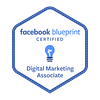For marketers, Facebook offers a staggering degree of power for reaching a variety of goals. Increase exposure for your business, generate leads, make sales, or build brand loyalty: all are within reach with Facebook advertising.
If you’re gun-shy about setting up your first campaign, don’t worry because this guide is for you. It’s condensed: just the essentials to get you started right away. Let’s begin.
Essential Guide to Facebook Advertising
Before you begin creating your first ad, you should first be aware that there’s more than one way to approach your ad campaign. Therefore, Step #1 is to choose your method.
Conclusion
The final steps are very intuitive: review your ad, then place your order. Once you’ve completed those actions, it’s time to sit back and see how your first ad does. Good luck, and remember this is a learning experience. Every ad you create will be an improvement on the last. Your next step will be to analyze your ad’s data. Don’t worry, we will go over that next! Now, ‘go get-um’!


